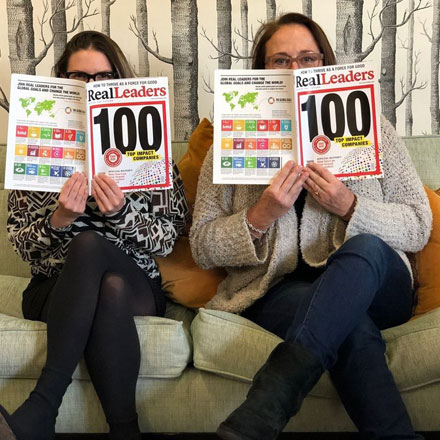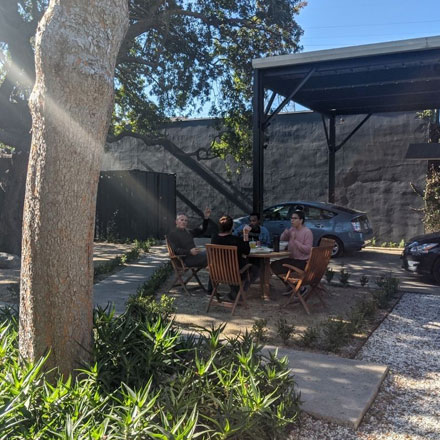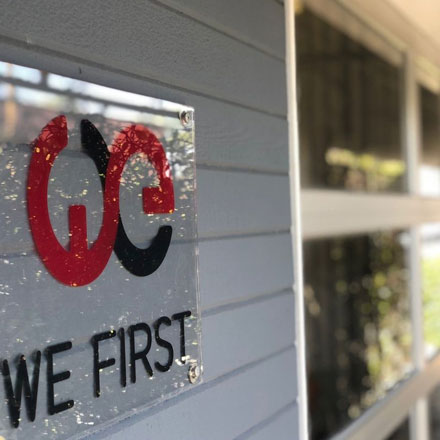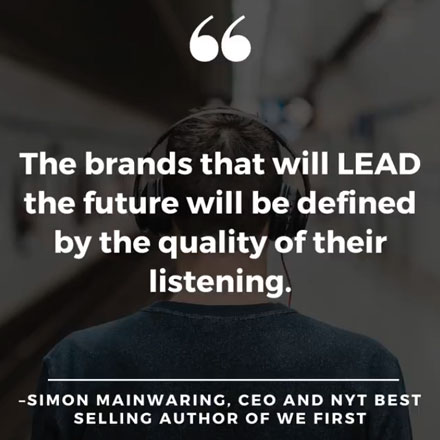
Purpose At Work
How Traditional Medicinals Blends Ancient Herbal Knowledge With Modern Science And World-Class Sustainability
In partnership with its suppliers, the Sebastopol, California-based organic tea company, Traditional Medicinals® (TM), recently conducted an impact assessment of its supply chain following the Natural Capital Protocol (NCP).
The NCP is a decision-making framework that enables organizations to identify, measure, and value their direct and indirect impacts and dependencies on natural resources.
Says TM’s Chief Purpose Officer Jamie Horst, “This work is allowing us to begin to assess nature-based impacts” in the context of “global climate projections and biodiversity threats, as well as opportunities for other measurement and disclosure. Understanding this data allows us to plan better and embed resilience into our decision-making and investment strategies.”
TM is celebrating a banner year. The plant-powered, purpose-fueled business has been supplying North America with healthful tea for half a century, since its founding in 1974 by Drake Sadler, a visionary activist, and Rosemary Gladstar, a fourth-generation herbalist.
“The co-founders were both deeply invested in creating systemic change, especially regarding the ways that business operated,” says Horst. “And in particular, addressing poverty throughout supply chains that experienced a lot of inherent inequity.”
Bettering people’s health along the way was a giant bonus.
On that basis, TM has since become one of the fastest growing tea brands on the continent.
What’s the Tea at TM?
“From the beginning, TM’s mission has been to inspire people to nurture their bodies, minds, and spirits through the goodness of plants,” says Horst, who’s been with the company since 2019.
TM, she says, is “committed to inspire active connection to plant wisdom in service of the well-being of people and the planet.”
“The goals of making tea and changing lives go hand-in-hand,” says Horst. From its certified organic and non-GMO ingredients to its commitment to renewable energy, TM represents an industry leader, if not a model, in blending environmental and social responsibility with financial success. “In everything we do, we strive to uphold the three pillars of sustainability: environmental protection, social equity, and economic viability.”
And it’s Horst’s responsibility to bring those three pillars to bear in every discussion of every decision. “My role,” she says, “involves ensuring that purpose-driven practices are integrated into all aspects of our business operations. That requires a lot of proactive visioning, target-setting, reporting, and measurement. Assurance that we’re tracking well and aligning on all of those things, from the board to the executive team, and throughout the entire organization.”
Two years ago, even human resources came directly under Horst’s purview. “That’s ideal because we want to make sure that every job is a ‘purpose’ job, that every employee knows how their contributions on a daily basis are enabling us to deliver the impact in the world that we hope to have.”
TM’s been gradually growing its product line and market presence — especially in Canada, where its growth is particularly strong. Meantime it has simultaneously begun to expand its offerings beyond its core 30+ high-quality, ethically sourced, organic, herbal teas it categorizes into nine wellness collections such as detox and relaxation. For example, it now also offers lozenges made from the same high quality, ethically sourced, organic herbal ingredients to soothe and support throat health and digestion. “After all,” says Horst, “you don’t always have access to boiling water — what if you’re on a plane?”
“The lozenges, like most moves in TM’s history, originated in consumer demand,” says Horst. “Innovation is a constant focus at TM. We’re dedicated to developing new product formulations that align with emerging trends in health and wellness.”
For instance, “Consumers are increasingly seeking products that address not only physical health, but also mental and emotional well-being. So,,today we’re actively exploring formulations and products that align with that holistic approach to wellness, acknowledging the interconnected nature of the mind, body, and spirit.”
The purpose is in the bag
Horst reminds us that approximately 80 percent of the world still turns to plant medicine as a primary form of healing. “And what I think is really wonderful about herbalism is that we’re empowered with the tools for self-care and for community care, to be able to take care of ourselves and our loved ones. The healing is all around us if we take the time to use it.”
Along those lines, Horst points to TM’s focus on sustainable sourcing of the medicinal herbs on which both its health philosophy and business bottom line depend. Around 40 percent of the Earth’s wild plant species are in danger of extinction. The FairWild standard, established by global conservation and economic development organizations, provides a framework for responsible resourcing of wild plants by business (e.g., collection at a sustainable level). But — and here’s that people-plants-planet triangulation that’s in TM’s DNA — the standard also guarantees workers are paid fairly and treated with respect.
“I’m really proud of the fact that we continue to formulate with FairWild-certified ingredients,” says Horst. “About a third of TM’s herbs are collected in the wild, which means that somebody is actually walking out into meadows and fields and forests to gather leaves and fruits and berries and flowers and roots and bring those back to feed into a global supply chain system.”
“By certifying those areas as FairWild lands, we’re able to understand all the biodiversity that’s present there, and to drive further economic value to those very rural areas without causing land use change or [introducing] more harmful forms of extraction … we’re committed to getting to 80 percent fair certified herbs by 2030 … We think that FairWild is one of the biggest conservation plays that we have.”
Steeped in sustainability
In the mid-aughts, TM innovated and operated the first solar-powered tea factory in the world. Today it’s still the largest. And the company’s since extended its environmental commitments with an approved science-based target of reducing its Scope 1 and 2 greenhouse gas emissions by 42 percent by 2030. “And that’s already on an incredibly low baseline because we are solar-powered and have such a minimal operational footprint,” says Horst. “We’ve also set a goal to reduce our Scope 3 impact by 2050.”
Furthermore — after almost a decade of research — TM’s achieved Biodegradable Products Institute (BPI) certification on its new compostable tea wrappers. “That’s the first ever BPI certified tea wrapper in the world,” says Horst. “So, for us, it’s really about extending beyond just the people who are directly involved in our supply chain and making sure that their families and communities are really healthy.”
Here’s a great example of that philosophy in practice:
TM partners with several Stanford doctors to take telemedicine to some of the rural areas of the Philippines from which the company sources its teabag paper. The Stanford docs work with the local on-the-ground medical networks. TM brings the Stanford team of doctors once or twice a year, in addition to multiple virtual visits. “Plus, we provide all the equipment.”
For example, Horst says, “We went back to take ultrasound [machines] along with an OB/GYN for the first time. Through this program right now, we believe that we’re reaching about 47,000 people.” Everybody wins with such a partnership. “Otherwise, every day that our framers spend away from the farm is less income for them.”
One of the main functions of the partnership is to provide reliable resources for local doctors. They’re all partnered with a Stanford doctor, so “if they have any problems, need referrals, need a second opinion, they can connect with the doctors here in the US. And, they also now have the equipment to set up these community clinics.”
What does that have to do with the price of tea in China?
Everything.





